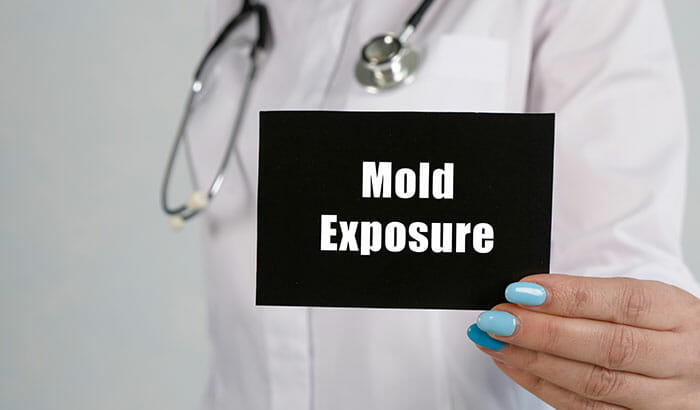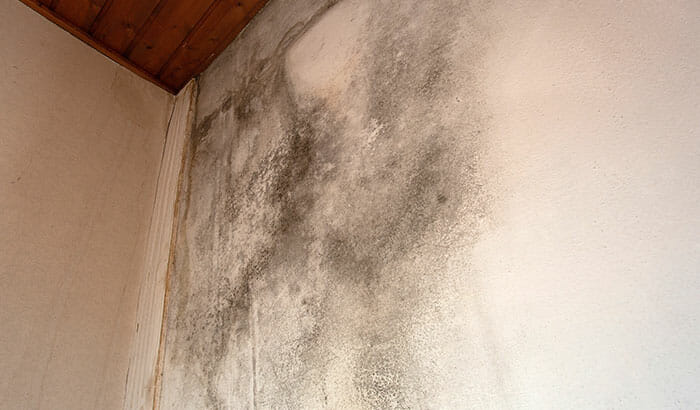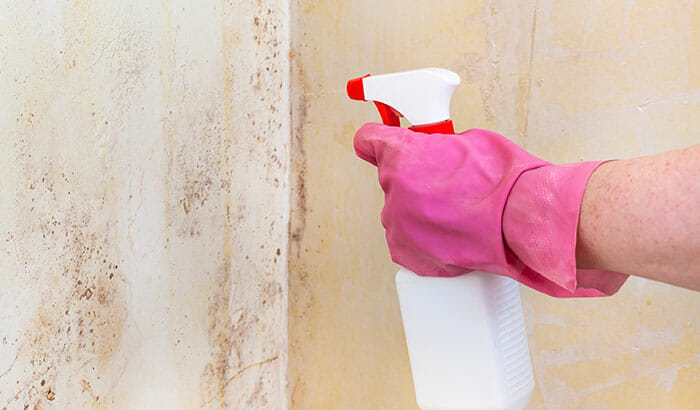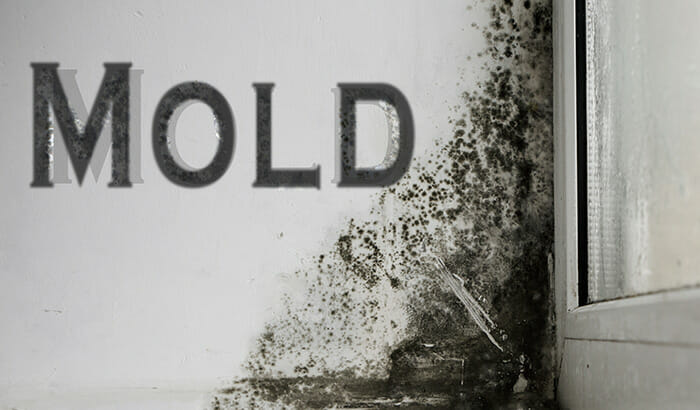If you think mold is just an unsightly problem contaminating your home, you would be wrong. But, unfortunately, it can also be problematic for your health.
How can you tell if exposure has become a burden on your health? There are a few tell-tale mold poisoning symptoms that you should be on the lookout for if your home has fallen to the dreaded growth of mold.
Here is a not-so-fun fact about mold: it can be found in any of our environments, such as in our homes, outside the house, and even in our food. However, even though it sometimes goes unnoticed, it can sneak up on you in various ways. And some people exposed to it may have a higher sensitivity to mold exposure.
Mold growth is especially prominent in areas and items that are damp. Because of this, homes in high-humidity climates or near bodies of water are especially susceptible to housing nasty mold spores. These pesky growths of mold can cause a slew of health problems.
Here are several mold exposure symptoms that everyone should be aware of:
1- Chronic Sinus Problems
A chronically stuffy nose that feels constantly irritated may be a direct cause of contact with mold. Especially if you do not experience any other symptoms that may point to a common cold. In fact, the majority of chronic nasal problems can be traced back to mold in the home or workplace.
It may be challenging to determine the difference between sinus problems caused by moldy environments and regular old sniffles. So, it is recommended that you see a doctor to help determine if your health is in danger due to a moldy environment.
2- Hypersensitivity to Pneumonitis
Hypersensitivity to pneumonitis can become amplified in rare cases. This condition is described as “a complex condition of varying intensity, clinical presentation, and natural history.” This ailment is caused by inhaling impurities (mold spores) into the lungs resulting in inflammation.
3- Skin Infection and Rashes
There is a mold called Sporothrix schenckii. This particular mold can be found in edible items, such as bread and beer. The sporotrichosis infection can be caused by mold spores entering the lungs or through open bodily sores. Once contracted, it can result in bumps on the skin’s surface, which may become open sores over time.
With rashes comes itchy, red, irritated, and often flaky skin. Patches of pink and even brown may appear on the skin, and the itchiness may come and go sporadically. A number of different things can cause a rash, but guess what? Yep, this can also be a symptom of being exposed to mold.
4- Neurological Problems
In some cases, a person who has suffered from mold toxicity may feel neurological effects (neurotoxicity). This can result in loss of cognitive and motor functions.
While most cases can be remedied through a proper diet, people who experience this may also have fatigue, anxiety, and depression symptoms. This is because airborne mold spores don’t just play a role in your respiratory system but can affect the function of your brain.
5- Mold-Induced Asthma
If you are someone who already experiences the hardships that come along with having asthma, mold will only exasperate it and make it worse. However, if you do not have asthma, breathing in airborne fungus may cause you to be the new proud owner of this unwanted syndrome.
Symptoms include shortness of breath and other respiratory ailments, such as wheezing.
6- Extreme Sleepiness/Fatigue
Being exposed to mold can have a direct correlation with the feeling of fatigue. This can also be a side effect of respiratory issues that are most likely caused by mold exposure. Fatigue and respiratory problems go hand in hand due to symptoms such as coughing and stuffiness disrupting sleep.
7- Aches and Pains
It is common to have “painful” symptoms caused by mold toxicity. Many of these pains will mimic other diseases, such as migraines, rheumatoid arthritis, and fibromyalgia. Because pain symptoms related to mold poisoning closely resemble other pains caused by other underlying issues, it can often be assumed that mold is not the cause.
However, if you are experiencing aches and pains, it is wise to assess your environment and look for signs of mold growth.
8- Watery Eyes
If you have eyes full of tears and haven’t been watching a sad commercial about puppies that need to be adopted, you most likely have allergies. More specifically, you are allergic to mold. Mold spores can elevate the levels of histamine that can cause watery eyes, itchy eyes, and a runny nose.
9- Sore Throat and Nausea/Vomiting
If you have black mold lingering about in your home and you spend the majority of your time there, this can easily cause your throat to be sore and raspy. In addition, exposure to mycotoxins (produced by fungi) can make you feel sick and possibly lead to uncomfortable nausea and even vomiting.
When your body’s immune system becomes overwhelmed, it can react with the feeling of “being sick.” Toxins from mold may be the cause of these types of symptoms. If you feel icky and don’t know why consult your doctor and consider having your home inspected for mold.
10- Allergic Bronchopulmonary Aspergillosis (it’s a big one)
The fungus Aspergillus fumigatus can cause an allergic reaction, disrupting your health. This mold is typically found in soil, such as indoor plants. It can even become apparent in rotten vegetables. The toxins can find their way into the lungs and damage airways, perhaps even permanently. Individuals with cystic fibrosis or asthma are especially at high risk.
It is best to consult a medical professional for mold exposure treatment if you feel like you are experiencing any of these symptoms. However, if you DO find that your environment is infested with mold, consulting a professional is also recommended.
The Bull Matrix Restoration and Disaster Clean Up professionals can help you rid your home of unwelcome mold growth and help keep you and your family in good health. Contact us today!




